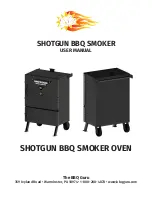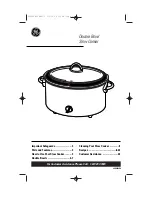
_ TECNOEKA Srl _________________________________________________________ use and instruction manual _
_ page 8 ________________________________________________________________________________________
3.
3.
3.
3. Instructions for the installer
Instructions for the installer
Instructions for the installer
Instructions for the installer
Dear Sir/Madame, thank you very much for having purchased our product. The following
warnings and suggestions concern the procedures to be followed for a correct installation, use
and maintenance of the appliance, to safeguard your safety as well as to obtain the very best
performance from the characteristics of the appliance.
General information
General information
General information
General information - To install and use any electric appliance a few fundamental rules must
be respected. This appliance must be installed by specialised personnel in accordance with the
regulations in force. Any maintenance or adjustment intervention must be carried out with the
appliance unplugged from the power source.
Warning: Gas cooking appliances produce heat and damp in the room where they are located.
An adequate airing of the room must be ensured by keeping every natural ventilation orifice
open or by installing an inlet hood fitted with a waste pipe.
Before switching on the oven for
the first time, clean it with soap and water and then rinse it thoroughly. Assemble the lateral
guides and insert any grids. Heat the oven for approximately 1 hour at maximum temperature
so as to eliminate possible odours that may arise from thermal insulation or grease residue.
Place of installation
Place of installation
Place of installation
Place of installation
-
For the gas appliance to work correctly, the gas combustion must be
supplied by enough air reaching the room in a natural way. (The installer must abide by the
current national installation norms and subsequent amendments). The air circulating into the
room must arrive directly from openings made in the external walls (Fig. a). Such openings must
have a clear 100 cm
2
cross section area for the air flow and a 100 cm
2
one to discharge
combusted gas. Should other gas operating appliances be installed, such openings must be
appropriately enlarged. These openings must be located in such a way as not to be obstructed
from either the inside or the outside. The opening allowing air circulation must be placed close
to the ground, whilst the one used for the combustion discharge must be located on the high
side of an external wall. Could not these openings be made in the same area where the
appliance is installed, the amount of air needed could also come from an adjacent room,
provided that this is not a bedroom nor a dangerous area and that it is appropriately ventilated
(current national installation norms and subsequent amendments).
Discharge of combustion products
Discharge of combustion products
Discharge of combustion products
Discharge of combustion products
-
Gas type cooking appliances must discharge the
combusted products through hoods connected to the chimney flue or directly to the outside.
The hood must be positioned at least 700 mm far from the working surface (Fig. b). Keep this
distance also when installing components or shelves horizontally above the appliance. In case a
hood could not be installed, an electric ventilation unit must be applied to the external part of
the room or to a window, provided that the room is fitted with openings for air circulation (the
current national installation norms and subsequent amendments) – (Fig. c). The electric
ventilation unit must ensure an air circulation rate equivalent to 3-5 times the volume of that
room per hour.
Warning: an intense and prolonged use of the appliance may require additional aeration, which
could be achieved opening a window or increasing the mechanical inlet power, where it exists,
consequently improving the airing efficiency.






































